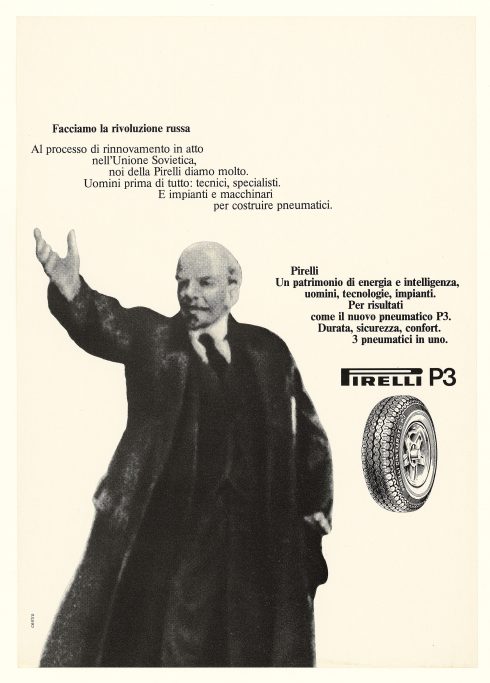The 1970s, Technology and Innovation
In 1975 Pirelli announced the launch of the second-generation radial tyre: simply called the “P3”, it was the result of integrated technology that combined the three fundamental features that were to be offered to the motorist: durability, safety, and comfort. Based on a series of innovative solutions referred to as a “unified structure” – the one used for the sporty P7 – the P3 was the tyre for small and medium-sized cars, which meant most cars on the roads in Italy in the 1970s. It was a qualitative leap forward that affected not just the product itself, but also the production process: the machine used for constructing the P3 had been designed from scratch with the aim of creating a tyre with a high degree of uniformity, while also making quality control possible throughout the manufacturing process. The tools used to make the tyres were electronically guided by machines “that receive their control impulses at strictly pre-established intervals from a device that ‘reads’ the work cycle recorded on punch tape”. A new age was dawning, already with its sights on information technology. Pirelli was synonymous with technology and the P3 was an integral part of this know-how: the advertising message viewed the new generation of radial tyres as a logical step for the enormous heritage of technological knowledge that was to take the Group to positions of true excellence.
It was this “unique heritage of energy and intelligence” that allowed Pirelli to create the P3, but also to export the machines needed to produce tyres in the Soviet Union and Iraq, to create rubber pipelines across the Mediterranean, to lay submarine cables in the Atlantic, and to design a tidal defence dam to save Venice: these were the subjects of the P3 advertising campaign in 1975, its first year of life. The same concept of the unique technological heritage, of which the Pirelli P3 was just one aspect, was taken up again the following year, in 1976, with the slogan “Pirelli is technology, P3 is Pirelli”. This campaign was an updated version of the 1975 one, showing the same subjects, in Venice, the United States, the USSR, and the Middle East, but seen through different eyes. In addition to a television commercial, which was released together with the press campaign, a merchandising campaign that played on the significance of the number three also helped create the commercial image of the Pirelli P3. This was a fine example of integrated communication, combining print advertising, television commercials and branded objects to tell the story of a high-tech product in an innovative way.


In 1975 Pirelli announced the launch of the second-generation radial tyre: simply called the “P3”, it was the result of integrated technology that combined the three fundamental features that were to be offered to the motorist: durability, safety, and comfort. Based on a series of innovative solutions referred to as a “unified structure” – the one used for the sporty P7 – the P3 was the tyre for small and medium-sized cars, which meant most cars on the roads in Italy in the 1970s. It was a qualitative leap forward that affected not just the product itself, but also the production process: the machine used for constructing the P3 had been designed from scratch with the aim of creating a tyre with a high degree of uniformity, while also making quality control possible throughout the manufacturing process. The tools used to make the tyres were electronically guided by machines “that receive their control impulses at strictly pre-established intervals from a device that ‘reads’ the work cycle recorded on punch tape”. A new age was dawning, already with its sights on information technology. Pirelli was synonymous with technology and the P3 was an integral part of this know-how: the advertising message viewed the new generation of radial tyres as a logical step for the enormous heritage of technological knowledge that was to take the Group to positions of true excellence.
It was this “unique heritage of energy and intelligence” that allowed Pirelli to create the P3, but also to export the machines needed to produce tyres in the Soviet Union and Iraq, to create rubber pipelines across the Mediterranean, to lay submarine cables in the Atlantic, and to design a tidal defence dam to save Venice: these were the subjects of the P3 advertising campaign in 1975, its first year of life. The same concept of the unique technological heritage, of which the Pirelli P3 was just one aspect, was taken up again the following year, in 1976, with the slogan “Pirelli is technology, P3 is Pirelli”. This campaign was an updated version of the 1975 one, showing the same subjects, in Venice, the United States, the USSR, and the Middle East, but seen through different eyes. In addition to a television commercial, which was released together with the press campaign, a merchandising campaign that played on the significance of the number three also helped create the commercial image of the Pirelli P3. This was a fine example of integrated communication, combining print advertising, television commercials and branded objects to tell the story of a high-tech product in an innovative way.






